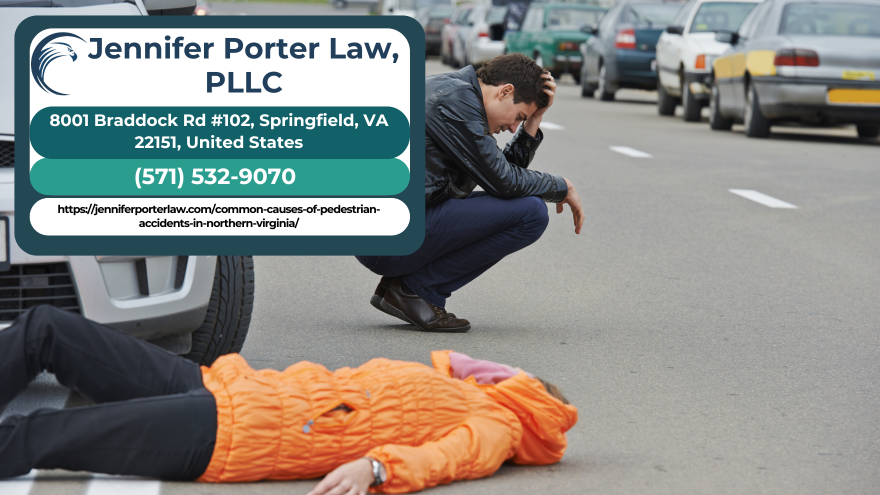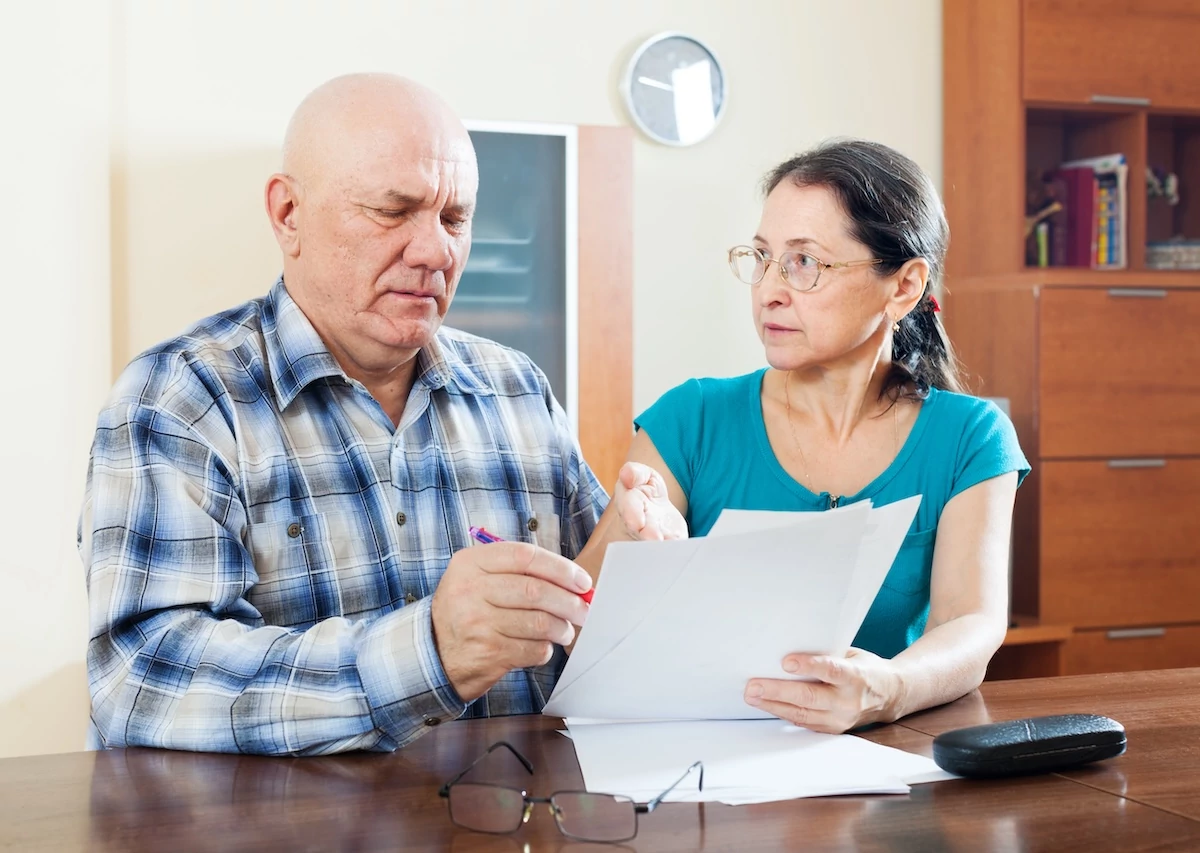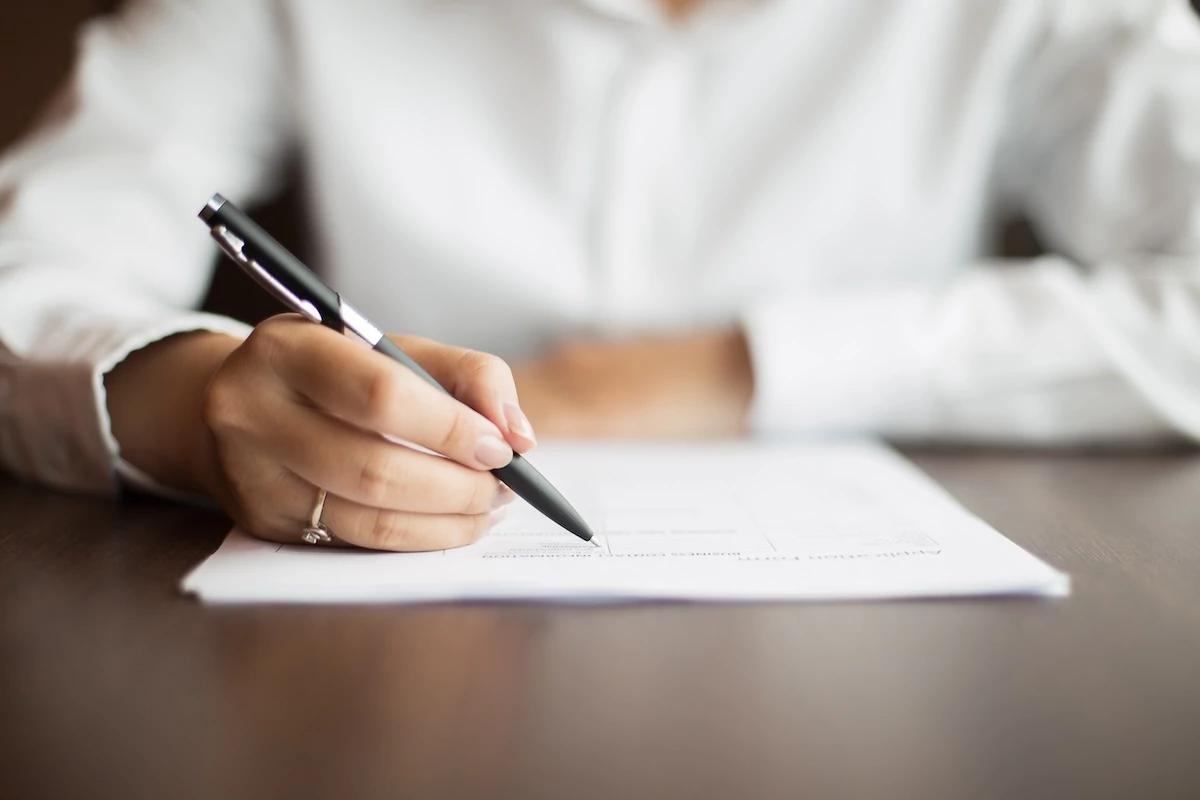Pedestrian accidents are among the most devastating collisions on Northern Virginia’s busy streets. Each year, hundreds of people are injured or killed while walking in areas like Fairfax, Arlington, and Alexandria, often due to speeding, distracted driving, or poorly designed intersections. These tragedies raise complex questions about fault and accountability. Determining who is legally responsible is not always straightforward, especially when both drivers and pedestrians are subject to specific traffic laws.
If you have been struck by a vehicle, a skilled Northern Virginia pedestrian accident lawyer can help you pursue justice and financial recovery. Jennifer Porter Law, PLLC, provides compassionate and determined representation for injured pedestrians, guiding clients through every step of the claims process and fighting to hold negligent drivers accountable. Our team is dedicated to securing the compensation victims need for medical expenses, lost income, and long-term recovery. Call Jennifer Porter Law, PLLC at (571) 532-9070 today to schedule a free consultation and discuss your case.
Where, When, and Why Pedestrian Accidents Happen in Northern Virginia
Recognizing the specific risk factors in Northern Virginia is the first step toward grasping the scope of the problem. Data from the Virginia Department of Transportation (VDOT) and local county analyses provide a detailed portrait of the most dangerous locations, times, and conditions for pedestrians.
Intersections as Danger Zones
While crosswalks are meant to be safe havens, intersections are the epicenter of pedestrian collisions in Northern Virginia. In Fairfax County, nearly 50% of all pedestrian-involved crashes occur at or near intersections, a rate significantly higher than the national average of 15 to 20%. The risk is even more concentrated in the denser urban areas of Arlington and Alexandria, where a staggering 73 to 76% of crashes resulting in death or serious injury are intersection-related.
Major corridors such as Richmond Highway (U.S. 1) in Fairfax have been identified as having the highest number of severe pedestrian and cyclist incidents in the entire region. These corridors often feature multiple lanes, high vehicle speeds, and heavy foot traffic, creating dangerous conditions when visibility or attention lapses for even a moment.
The Dangers of Darkness
The overwhelming majority of fatal pedestrian accidents occur after the sun goes down. Statewide, 55% of fatalities happen between 6:00 p.m. and midnight. In Northern Virginia, the peak hours for severe or fatal crashes are between 5:00 p.m. and 10:00 p.m., and a full 82% of all pedestrian fatalities in the region happen at night or during low-light hours of dawn and dusk. Poor lighting is a lethal contributor; in Fairfax County, a crash that occurs in the dark without street lighting is 5.3 times more likely to be fatal than a crash in daylight. These statistics underscore the deadly combination of limited visibility, driver fatigue, and impaired reaction times that converge after dark.
Speed and Severity
Speed remains one of the most decisive factors in pedestrian survival. In Fairfax County, crashes on roads with speed limits of 35 mph or less are three times less likely to be fatal than those on higher-speed roads. Yet the danger profile in Northern Virginia is not so simple. On suburban arterial roads, which are often wide, fast-moving, and poorly lit, higher speeds increase the risk of death on impact.
Conversely, in denser urban environments like Arlington and Alexandria, the majority of serious injury crashes occur on roads at or below 35 mph. Here, the issue is not high velocity but high complexity: multiple lanes of traffic, frequent intersections, dense pedestrian activity, and driver behaviors such as inattention, aggressive turning, and failure to yield. These urban factors make even “low-speed” zones perilous for pedestrians.
A Disproportionate Burden
Pedestrian danger is not equally distributed. A Fairfax County health report found that Black and Hispanic residents are injured or killed at more than double the rate of White residents. This aligns with a statewide VDOT analysis showing that corridors with the highest risk of fatalities often overlap with socioeconomic vulnerability—areas with more zero-vehicle households, greater reliance on public transit, and limited pedestrian infrastructure. In other words, the people most dependent on walking are also the most exposed to unsafe conditions. This pattern points to an urgent need for equitable investment in pedestrian safety improvements, from better lighting to protected crossings and reduced speed limits in high-risk neighborhoods.
| Category | Key Statistics / Observations |
|---|---|
| Intersections as Danger Zones | In Fairfax County, about 50% of pedestrian crashes occur at or near intersections. In Arlington and Alexandria, 73–76% of fatal or serious crashes happen at intersections. |
| The Dangers of Darkness | Around 82% of pedestrian fatalities in Northern Virginia occur at night or during dawn and dusk. Statewide, 55% of pedestrian deaths happen between 6:00 p.m. and midnight. Crashes in dark areas without street lighting are 5.3 times more likely to be fatal in Fairfax County. |
| Speed and Severity | Crashes on roads with speed limits above 35 mph are far more likely to be fatal. On roads with limits of 35 mph or less, crashes are three times less likely to cause death. In dense urban areas, most serious pedestrian injuries still occur on these lower-speed roads because of high traffic complexity. |
| A Disproportionate Burden | Black and Hispanic residents in Fairfax County are injured or killed at more than twice the rate of White residents. Areas with more households without vehicles and limited pedestrian infrastructure face the highest risks. |
Common Causes of Pedestrian Accidents
While statistics can show where and when pedestrian accidents occur, proving fault requires knowing why they happen. The cause of a pedestrian accident almost always comes down to a failure by one or more parties to exercise reasonable care, a legal concept known as negligence. These causes typically fall into three main categories: driver negligence, pedestrian actions, and environmental factors.
Driver Negligence
In most cases, the actions or inactions of the motorist are the primary cause of a pedestrian collision. A driver’s negligence is enacted through a multi-ton vehicle, creating a severe power imbalance where a momentary lapse in judgment can have catastrophic consequences for an unprotected person on foot.
Distracted Driving
Distracted driving remains one of the leading causes of preventable pedestrian crashes nationwide. Distractions divert a driver’s cognitive, visual, and manual attention from the road. Common examples include texting, talking on a cell phone, adjusting the radio or GPS, eating, or interacting with passengers. Virginia law explicitly prohibits holding a handheld personal communications device while driving, a rule intended to reduce this deadly behavior.
Failure to Yield the Right-of-Way
Many collisions occur because drivers fail to yield to pedestrians where the law requires them to do so. This includes not stopping for pedestrians in marked or unmarked crosswalks, turning at intersections without checking for crossing pedestrians, or disregarding traffic signals and stop signs. Even a brief failure to scan for foot traffic can turn an otherwise lawful maneuver into a devastating accident.
Speeding and Aggressive Driving
Speeding significantly increases both the likelihood and the severity of a pedestrian crash. Driving above the posted limit or too fast for weather and road conditions reduces a driver’s ability to react and lengthens stopping distances. The faster a vehicle is moving, the greater the impact force, turning what might have been a survivable incident into a fatal one. Aggressive driving behaviors, such as tailgating or unsafe lane changes, only compound the danger.
Impaired Driving (DUI/DWI)
Driving under the influence of alcohol or drugs impairs judgment, coordination, vision, and reaction time, making intoxicated drivers a major threat to pedestrians. Alcohol-related pedestrian fatalities remain a serious problem across Virginia. It is also worth noting that insurance companies and defense attorneys often examine whether the pedestrian had consumed alcohol. Statewide data from 2017 to 2022 shows that roughly one-third of pedestrians tested after fatal crashes had a blood alcohol concentration of 0.08% or higher, a fact frequently used to dispute liability.
Pedestrian Actions and the Shared-Roadway Doctrine
Although drivers carry a heightened responsibility to protect others, pedestrians also have legal duties to exercise reasonable care for their own safety. Insurance investigators often examine a pedestrian’s conduct leading up to the collision, looking for evidence of contributory negligence. Common examples include:
- Crossing a street outside of a designated crosswalk or intersection (jaywalking)
- Ignoring pedestrian control signals, such as “Don’t Walk” signs
- Suddenly stepping into the roadway from between parked cars or other visual obstructions
- Walking while distracted by a phone or wearing headphones that block surrounding sounds
Even when a pedestrian makes one of these errors, it does not automatically relieve a driver of responsibility. Motorists are still required to maintain a proper lookout and operate their vehicles safely under all circumstances.
Infrastructure and Environmental Hazards
Sometimes neither the driver nor the pedestrian is solely at fault. Dangerous or poorly maintained infrastructure can contribute significantly to pedestrian crashes. Hazardous roadway design or neglect can create conditions where collisions become almost inevitable. Examples include:
- Unmarked or poorly lit crosswalks
- Faded or missing pavement markings
- Inadequate or non-existent street lighting
- Malfunctioning traffic or pedestrian signals
- Obstructed views caused by overgrown vegetation or improperly placed signs
In such cases, liability may extend beyond the individuals involved. A government agency or contractor responsible for road maintenance or traffic control could share fault for failing to correct known safety issues. Pursuing these claims can be complex, as they often involve strict notice requirements and sovereign immunity defenses, but identifying these factors can be critical for achieving full compensation.

Virginia’s Rules of the Road
In any pedestrian accident claim is the question of who had the right-of-way. Virginia’s state code outlines a detailed framework that governs the interaction between drivers and pedestrians. Understanding these laws is essential to determining liability and proving negligence.
Driver’s Duty to Stop and Yield
Virginia law is clear about when a motorist must stop for a pedestrian. Under Virginia Code § 46.2-924, the driver of any vehicle must stop for a pedestrian crossing a highway under the following conditions:
- At any clearly marked crosswalk, whether it is located at an intersection or mid-block
- At any unmarked crosswalk located at an intersection, defined as the extension of the sidewalk lines across the street
- At any intersection where the driver is on a road with a speed limit of 35 miles per hour or less
The statute further requires that the driver remain stopped until the pedestrian has completely passed the lane in which the vehicle is stopped and the adjacent lane. It is also illegal for a driver to overtake or pass another vehicle that has stopped at a crosswalk to allow a pedestrian to cross safely. These provisions are designed to eliminate confusion at intersections and ensure that pedestrians have a clear and protected path across the roadway.
Pedestrians’ Duties and Responsibilities
Pedestrians also have legal duties to exercise reasonable care for their own safety. Virginia’s statutes specify several key responsibilities:
- Virginia Code § 46.2-923: Pedestrians must cross at intersections or marked crosswalks whenever possible and may not carelessly or maliciously interfere with the orderly passage of vehicles.
- Virginia Code § 46.2-926: A pedestrian may not step into a highway from between parked cars or other obstructions where they would be hidden from the view of approaching drivers.
- Virginia Code § 46.2-928: Pedestrians must use sidewalks when they are available and in good condition. If no sidewalk is available, they must walk on the far-left side of the roadway or its shoulder, facing oncoming traffic.
- Traffic Control Signals: Pedestrians are required to obey all “Walk” and “Don’t Walk” indicators. A pedestrian who has already started crossing on a “Walk” signal may continue to a sidewalk or safety island, but no one should begin crossing when the “Don’t Walk” signal is active.
These rules are intended to reduce conflicts between vehicles and pedestrians while promoting predictability and safety for both parties.
Legislative Updates and Legal Implications
Recent legislative changes have slightly altered how certain pedestrian actions are treated under Virginia law. Amendments effective in 2020 and 2021 now prohibit law enforcement officers from stopping a pedestrian solely for violations such as improper crossing (jaywalking) or stepping into the road from between parked cars. While these actions can still be introduced as evidence in a civil case, they are no longer considered criminal offenses.
This change reflects the legislature’s recognition that such behaviors, while risky, are not inherently reckless. A skilled personal injury attorney can use this legislative intent to challenge an insurance company’s attempt to argue that a pedestrian’s minor infraction should completely bar recovery. Instead, the focus should remain on whether the driver fulfilled their legal duty to yield and operate their vehicle safely.
Northern Virginia Pedestrian Accident Lawyer Jennifer Porter

Jennifer Porter
For more than 25 years, Jennifer Porter has been dedicated to providing exceptional, informed, and compassionate representation to those injured through no fault of their own. She has successfully represented hundreds of clients who suffered life-changing injuries in accidents caused by negligence, combining legal skill with genuine care for each individual she serves. Jennifer’s clients trust her not only for her results but also for her ability to listen, explain, and advocate with both precision and empathy.
A longtime Northern Virginia resident, Jennifer is recognized as a Super Lawyer, holds an AV Preeminent Peer Review Rating from Martindale-Hubbell®, and maintains a 10/10 Avvo rating for legal excellence and professional ethics. She is an active member of the Virginia Trial Lawyers Association and the Fairfax Bar Association. Jennifer Porter is committed to helping clients rebuild their lives after serious pedestrian and personal injury accidents with strength, skill, and integrity.
Virginia’s Contributory Negligence Law
The single most important and dangerous legal doctrine for any pedestrian accident victim in Virginia is the rule of pure contributory negligence. It is a harsh and unforgiving principle that sets Virginia apart from most other states and makes experienced legal representation essential.
In its simplest form, the rule states that if you are found to be even 1% at fault for your accident, you are legally barred from recovering any compensation for your injuries. You receive nothing, no matter how severe your losses may be.
How the Rule Works in Practice
Consider a common example. A pedestrian is crossing the street in a marked crosswalk with the “Walk” signal in their favor. A driver, speeding and distracted by their phone, runs a red light and strikes the pedestrian, causing devastating injuries. The driver is clearly the primary cause of the collision. However, if the insurance company can show that the pedestrian briefly glanced down at their own phone for even a moment while in the crosswalk, they may argue that this small act of inattention makes the pedestrian 1% responsible for the accident. Under Virginia’s contributory negligence law, that single percentage point is enough to deny the victim’s entire claim. The pedestrian would recover nothing for medical expenses, lost wages, or pain and suffering.
This rule transforms a personal injury claim into something far more perilous than a typical damages negotiation. It becomes a high-stakes battle over fault, where the entire outcome hinges on whether the insurance company can assign even the slightest portion of blame to the injured person.
The Insurance Company’s Strategy
Insurance companies understand how powerful the contributory negligence rule is, and they use it to their full advantage. Their goal is not necessarily to prove the driver was blameless but to shift any fraction of fault onto the victim. To achieve this, they deploy investigators, adjusters, and defense attorneys who are trained to analyze every detail of the pedestrian’s behavior before and during the collision.
This is why insurance adjusters often contact victims immediately after an accident, pressing for a recorded statement. These questions are rarely neutral. They are designed to elicit comments that can later be framed as admissions of fault. A simple statement such as “I didn’t see the car coming” or “I might have looked down for a second” can be used to argue that the pedestrian contributed to the crash, effectively destroying their claim.
Get the Legal Help You Deserve After a Pedestrian Accident
Proving fault in a pedestrian accident is rarely simple, especially under Virginia’s strict contributory negligence laws. Every detail matters, from the location of the impact to witness statements and traffic signal data. A skilled attorney can investigate the circumstances, gather critical evidence, and build a case that protects your rights and strengthens your compensation claim.
If you or someone you love has been injured in a pedestrian accident in Northern Virginia, do not wait to seek legal help. Jennifer Porter Law, PLLC, is dedicated to representing victims with compassion, focus, and determination. Our team of Northern Virginia pedestrian accident lawyers will fight for your right to fair compensation and guide you through every step of the recovery process. Call (571) 532-9070 today or contact the firm online to schedule your free consultation.



